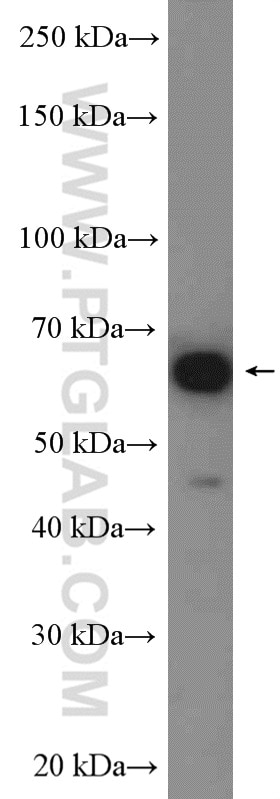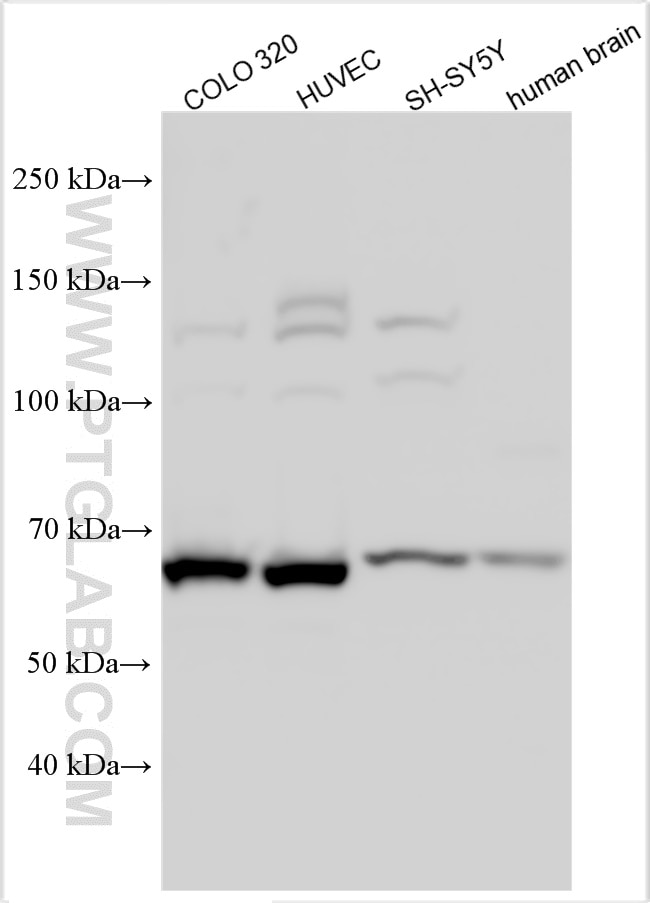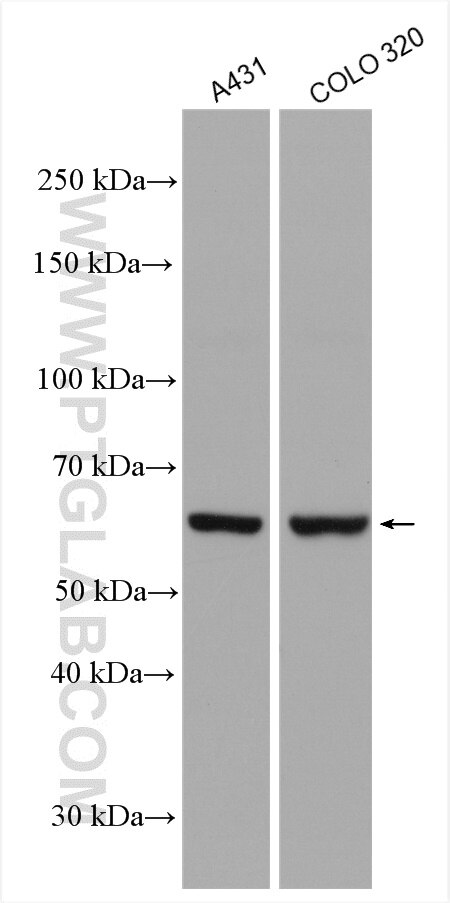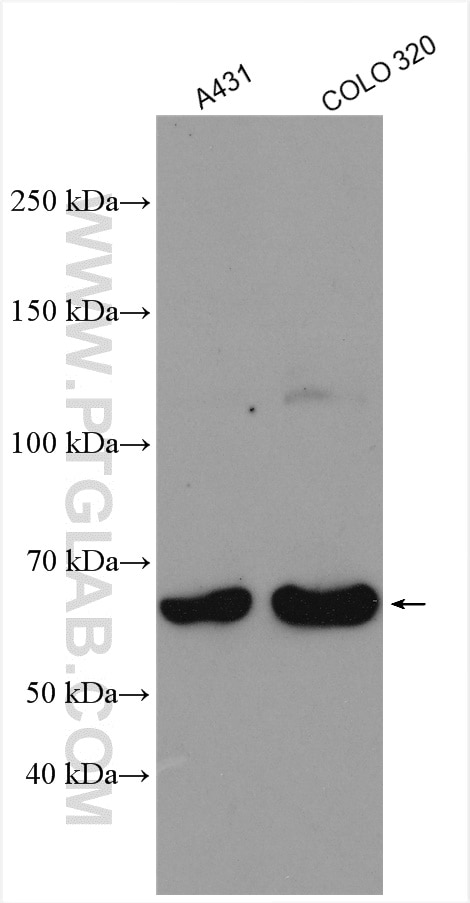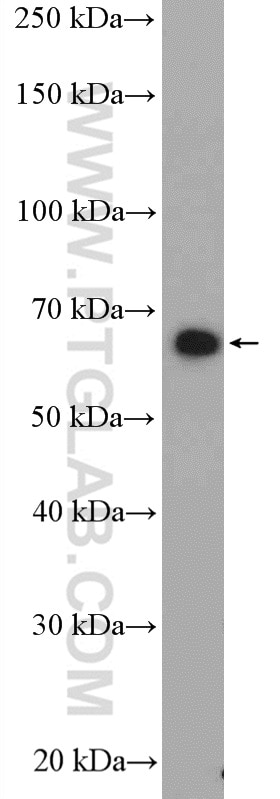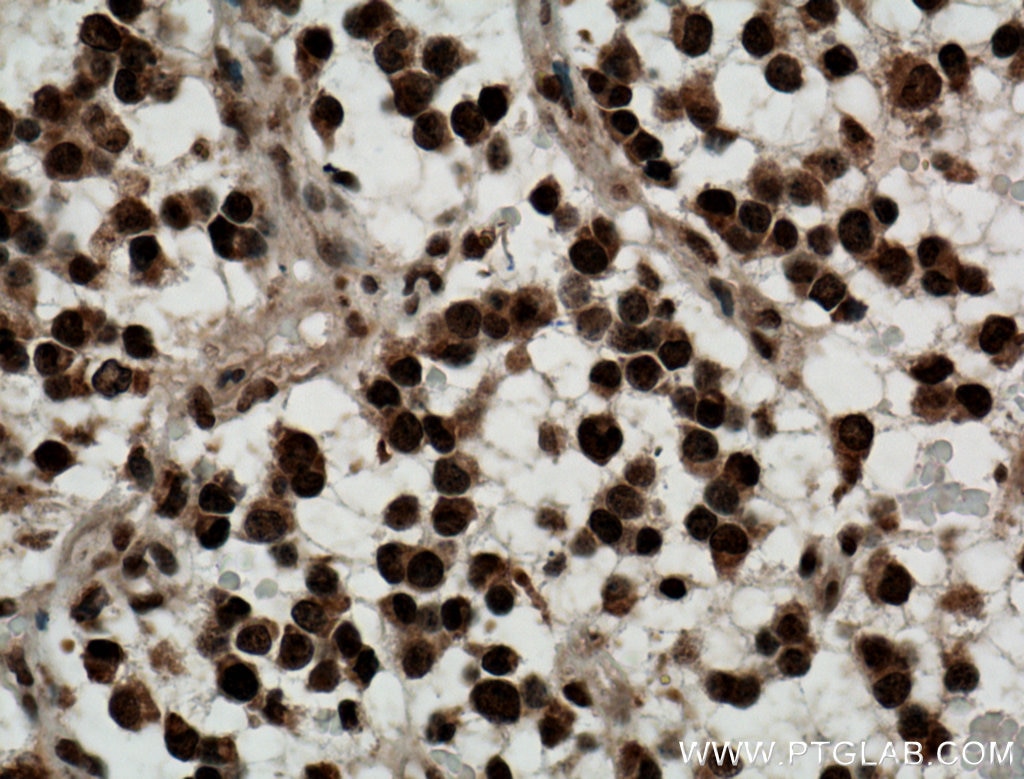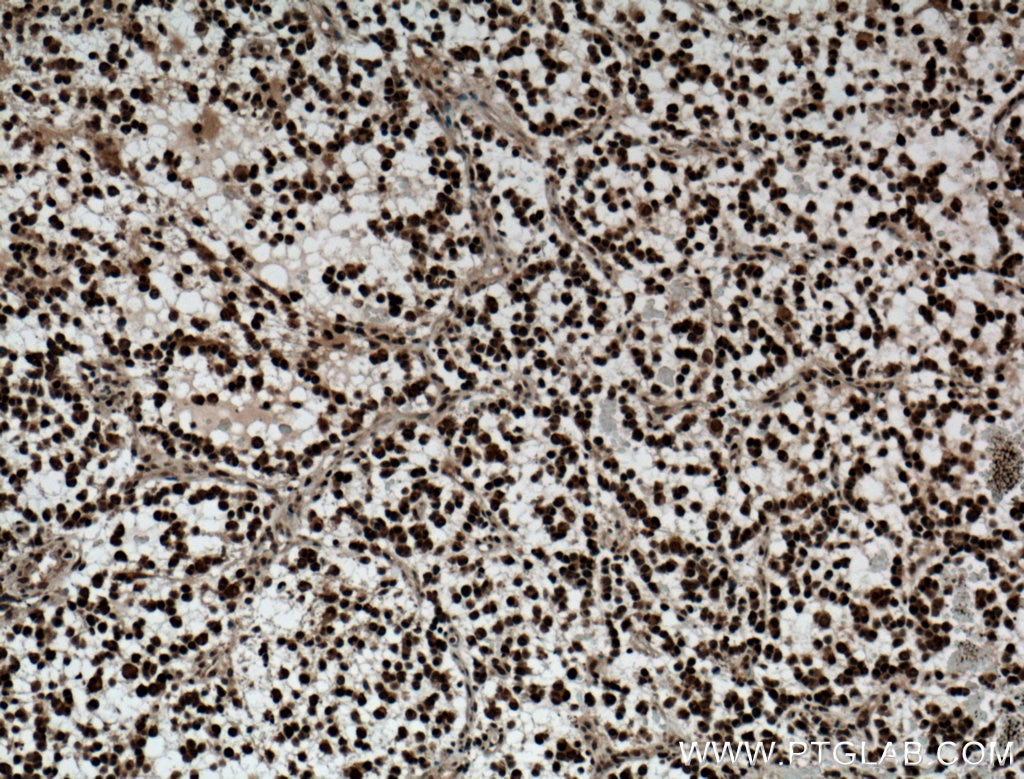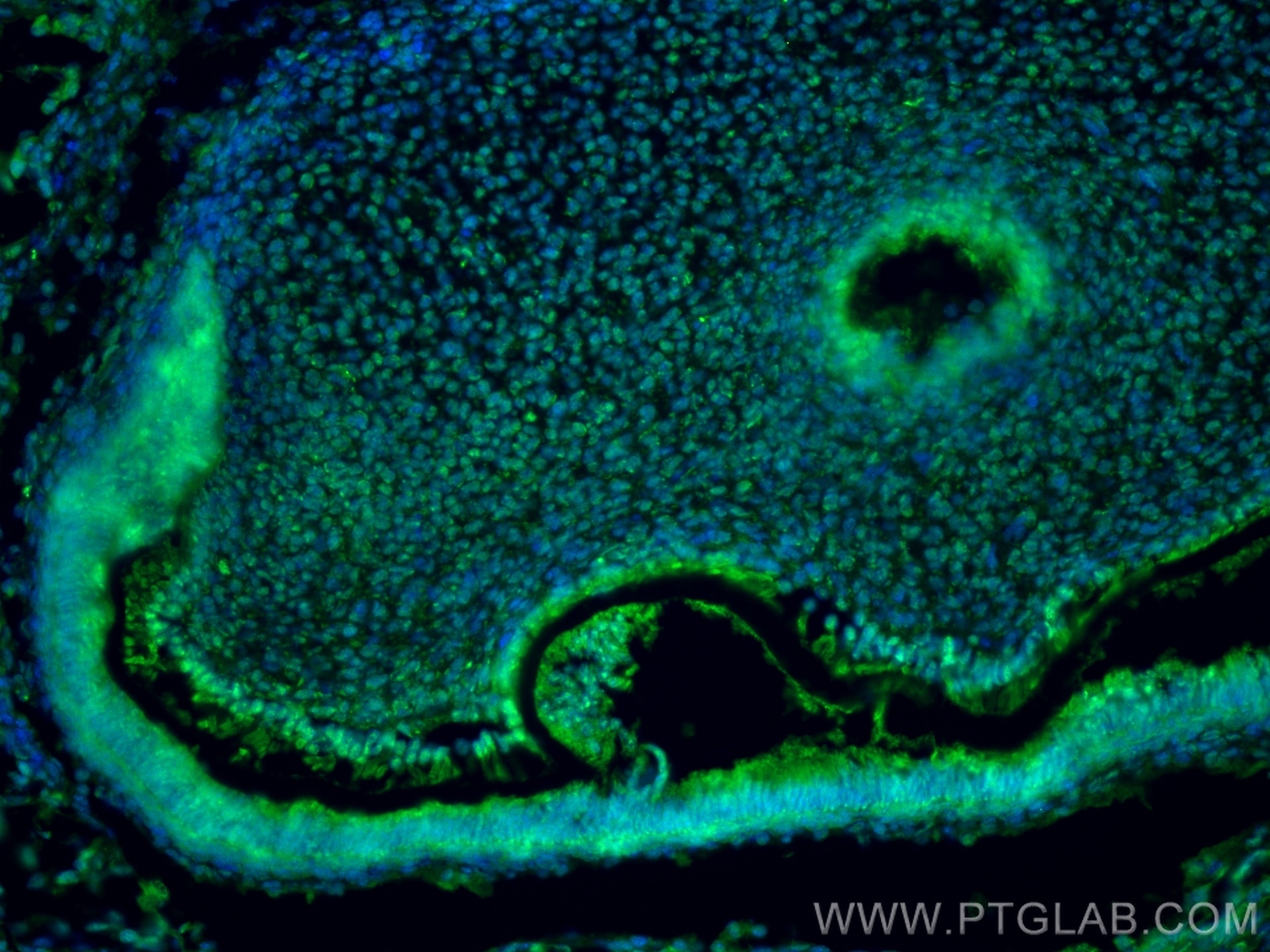Validation Data Gallery
Tested Applications
| Positive WB detected in | COLO 320 cells, fetal human brain tissue, SH-SY5Y cells, A431 cells, HUVEC cells |
| Positive IHC detected in | human gliomas tissue Note: suggested antigen retrieval with TE buffer pH 9.0; (*) Alternatively, antigen retrieval may be performed with citrate buffer pH 6.0 |
| Positive IF-P detected in | Customer Sample customer |
Recommended dilution
| Application | Dilution |
|---|---|
| Western Blot (WB) | WB : 1:1000-1:4000 |
| Immunohistochemistry (IHC) | IHC : 1:50-1:500 |
| Immunofluorescence (IF)-P | IF-P : 1:200-1:800 |
| It is recommended that this reagent should be titrated in each testing system to obtain optimal results. | |
| Sample-dependent, Check data in validation data gallery. | |
Published Applications
| WB | See 15 publications below |
| IHC | See 3 publications below |
| IF | See 10 publications below |
| ChIP | See 1 publications below |
Product Information
10975-2-AP targets Nurr1/NR4A2 in WB, IHC, IF-P, ChIP, ELISA applications and shows reactivity with human samples.
| Tested Reactivity | human |
| Cited Reactivity | human, mouse, rat, monkey |
| Host / Isotype | Rabbit / IgG |
| Class | Polyclonal |
| Type | Antibody |
| Immunogen | Nurr1/NR4A2 fusion protein Ag1418 相同性解析による交差性が予測される生物種 |
| Full Name | nuclear receptor subfamily 4, group A, member 2 |
| Calculated molecular weight | 66 kDa |
| Observed molecular weight | 66 kDa |
| GenBank accession number | BC009288 |
| Gene Symbol | Nurr1 |
| Gene ID (NCBI) | 4929 |
| RRID | AB_2153760 |
| Conjugate | Unconjugated |
| Form | Liquid |
| Purification Method | Antigen affinity purification |
| UNIPROT ID | P43354 |
| Storage Buffer | PBS with 0.02% sodium azide and 50% glycerol , pH 7.3 |
| Storage Conditions | Store at -20°C. Stable for one year after shipment. Aliquoting is unnecessary for -20oC storage. |
Background Information
NR4A2 belongs to the orphan nuclear receptor (NR) family referred to as NR4A family, which have been implicated in cell cycle regulation, apoptosis, inflammation, metabolism and more recently in carcinogenesis [PMID:22583411]. NR4A2 also has a role in the expression of several proteins that are necessary for the synthesis and regulation of DA, such as tyrosine hidroxilase, DA transporter, vesicular monoamine transporter 2, and cRET [PMID:22294735]. Act as a transcriptional regulator, NR4A2 is essential for the differentiation and maintenance of meso-diencephalic dopaminergic (mdDA) neurons during development. It is crucial for expression of a set of genes such as SLC6A3, SLC18A2, TH and DRD2 which are essential for development of mdDA neurons [PMID: 17184956].
Protocols
| Product Specific Protocols | |
|---|---|
| WB protocol for Nurr1/NR4A2 antibody 10975-2-AP | Download protocol |
| IHC protocol for Nurr1/NR4A2 antibody 10975-2-AP | Download protocol |
| IF protocol for Nurr1/NR4A2 antibody 10975-2-AP | Download protocol |
| Standard Protocols | |
|---|---|
| Click here to view our Standard Protocols |
Publications
| Species | Application | Title |
|---|---|---|
Cancer Identification of low intratumoral gene expression heterogeneity in neuroblastic tumors by genome-wide expression analysis and game theory. | ||
Cells Hair-Follicle-Associated Pluripotent (HAP) Stem Cells Can Extensively Differentiate to Tyrosine-Hydroxylase-Expressing Dopamine-Secreting Neurons. | ||
Cell Signal miR-206 modulates lipopolysaccharide-mediated inflammatory cytokine production in human astrocytes. | ||
Int J Biochem Cell Biol Caveolin-1 facilitates cell migration by upregulating nuclear receptor 4A2/retinoid X receptor α-mediated β-galactoside α2,6-sialyltransferase I expression in human hepatocarcinoma cells. | ||
Brain Sci Itaconate Attenuates Neuroinflammation and Exerts Dopamine Neuroprotection in Parkinson's Disease through Inhibiting NLRP3 Inflammasome | ||
Exp Ther Med Attenuated macrophage activation mediated by microRNA-183 knockdown through targeting NR4A2. |
